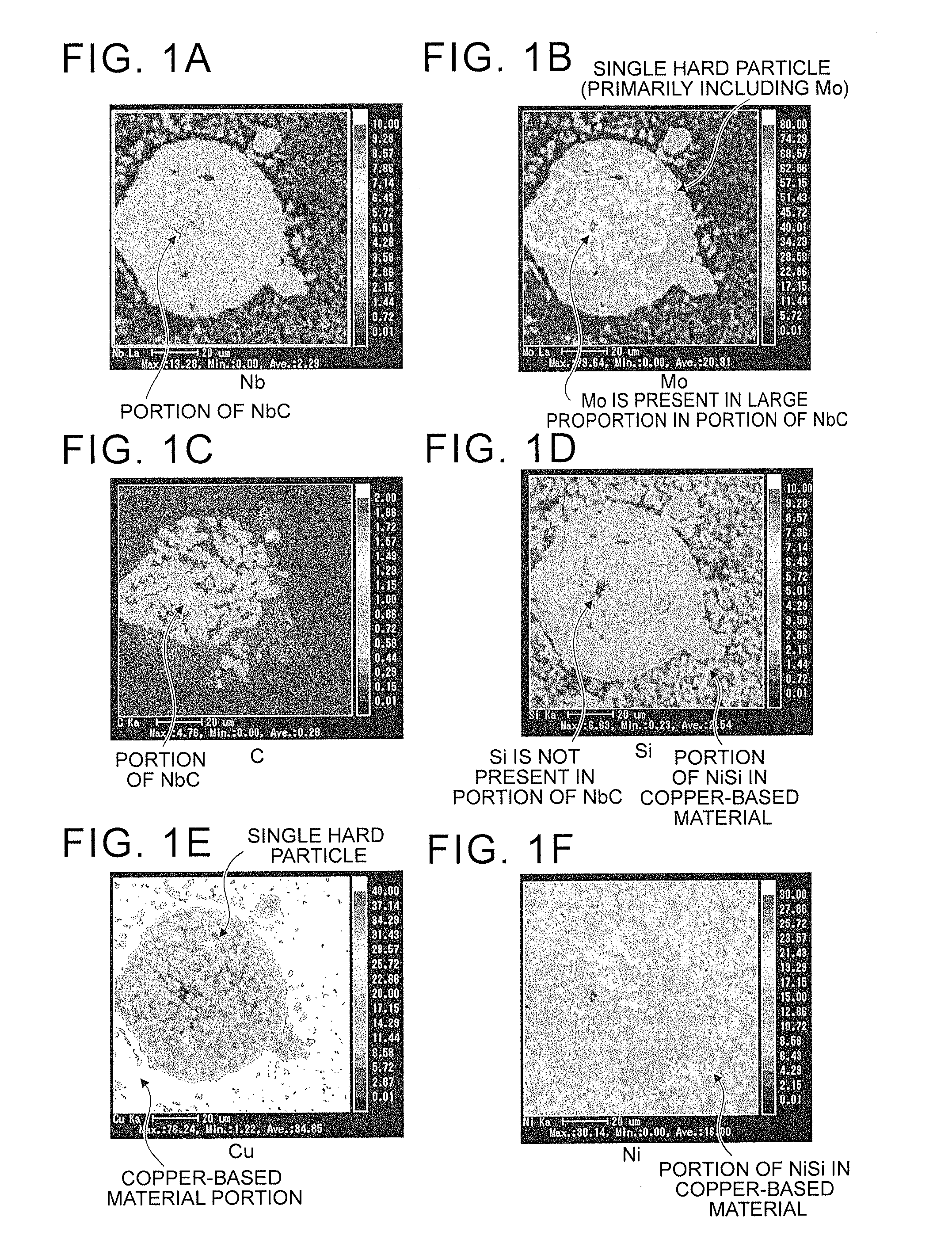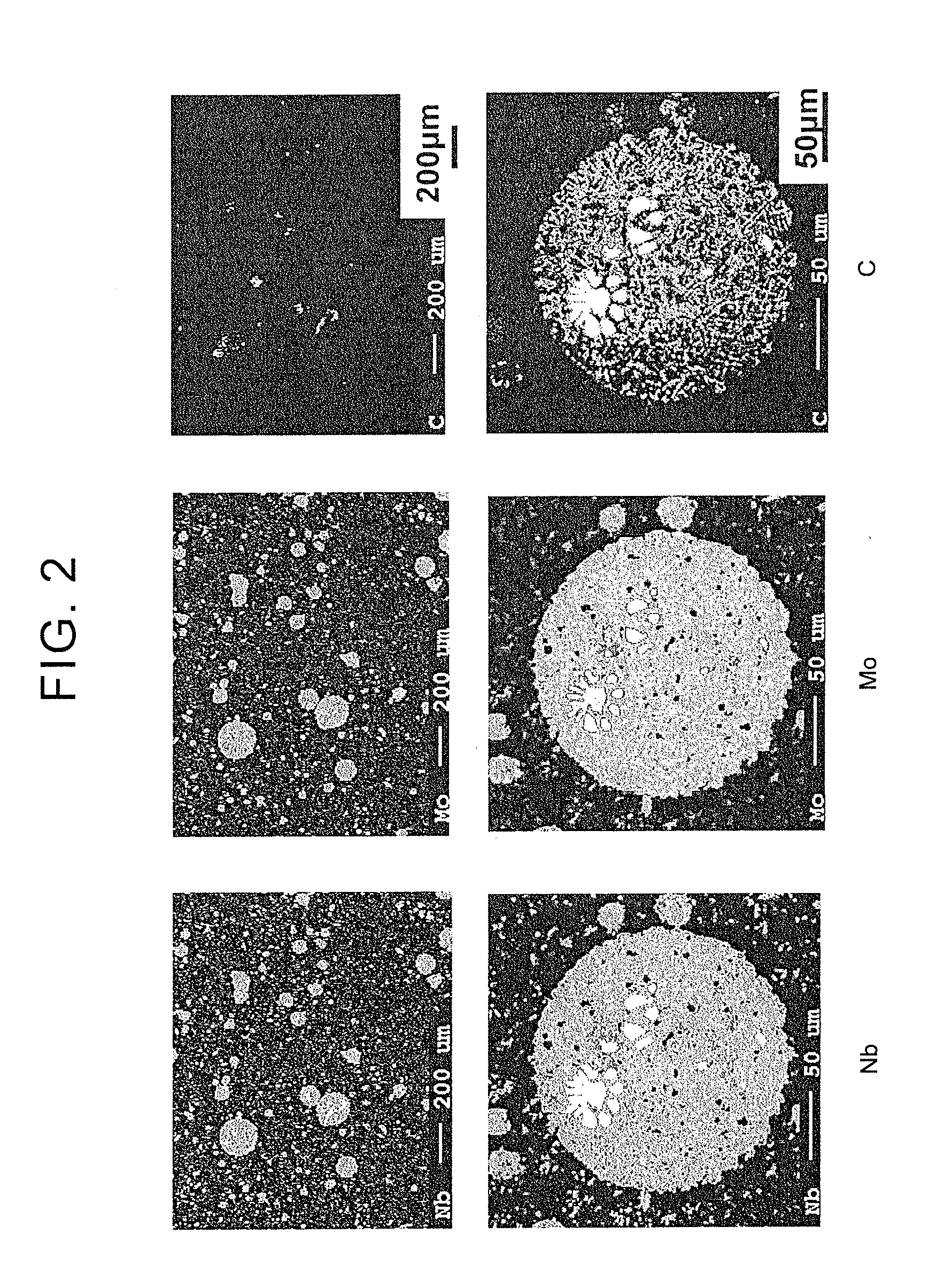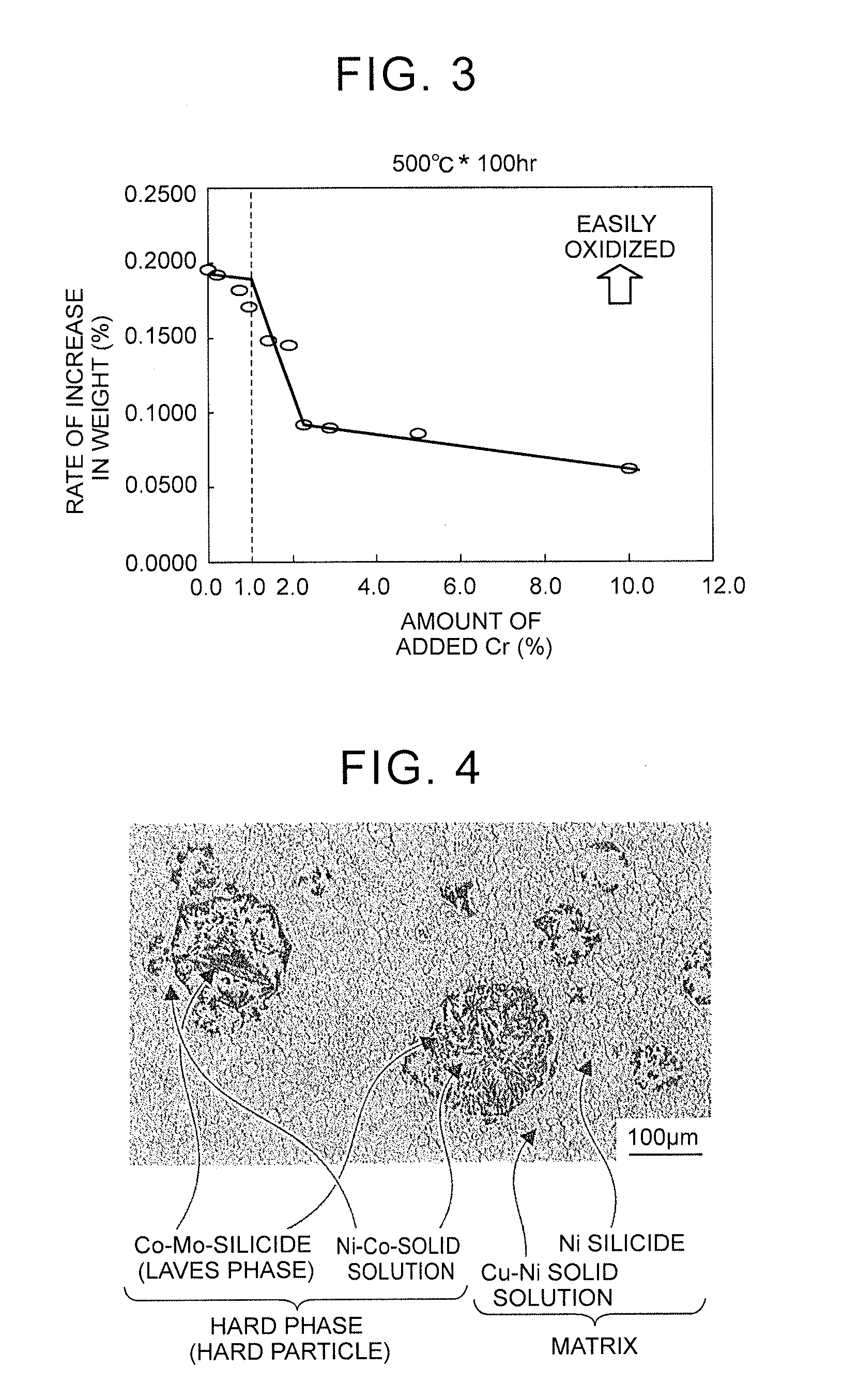Wear-resistant copper-based alloy, cladding alloy, cladding layer, and valve system member and sliding member for internal combustion engine
- Summary
- Abstract
- Description
- Claims
- Application Information
AI Technical Summary
Benefits of technology
Problems solved by technology
Method used
Image
Examples
Example
Examples 1 to 3 and Comparative Examples 1 to 7 and 8 to 10
[0058]The compositions (mixing compositions) of wear-resistant copper-based alloys of Examples 1 to 3 and copper-based alloys of Comparative Examples 1 to 7 are shown in Table 1.
Example
[0059]Comparative Example 8 corresponds to the copper-based alloy disclosed in JP 4-297536 A. Comparative Example 9 corresponds to the copper-based alloy disclosed in JP 8-225868 A. Comparative Example 10 corresponds to the copper-based alloy disclosed in Japanese Patent No. 4114922. The components of the wear-resistant copper-based alloys of Examples 1 to 3 and the copper-based alloys Comparative Examples 1 to 7 are shown in Table 1.
TABLE 1Component (wt %)CrCuNiSiMoFeNbCExample 10.0062.64917.8002.9606.0609.5500.7900.070Example 20.2562.49217.7562.9536.0459.5260.7880.070Example 30.7562.17917.6672.9386.0159.4780.7840.069Comparative Example 11.0062.02317.6222.9305.9999.4550.7820.069Comparative Example 21.5061.70917.5332.9165.9699.4070.7780.069Comparative Example 32.0061.39617.4442.9015.9399.3590.7740.069Comparative Example 42.5061.08317.3552.8865.9099.3110.7700.068Comparative Example 53.0060.77017.2662.8715.8789.2640.7660.068Comparative Example 65.0059.51716.9102.8125.7579.0730.7510.06...
Example
[0077]The test results of the wear-resistant copper-based alloy of Example 1 as the cladding layer and the copper-based alloys of Comparative Examples 8 to 10 are shown in FIG. 6 (test temperature: 600° C.) and FIG. 7 (test temperature: 230° C. at the contact surface). At any of the test temperatures shown in FIGS. 6 and 7, the wear amount of the wear-resistant copper-based alloy of Example 1 was lower than those of the copper-based alloys of Comparative Examples 8 to 10.
[0078]
[0079]The inventors inspected the structure of the cladding layer of Example 1 using an EPMA analyzer. NbCMo was formed around NbC. The matrix forming the cladding layer was formed by including, as a primary element, a Cu—Ni-based solid solution and a mesh-like silicide including nickel as primary components. It was confirmed that a complex carbide of Nb and Mo was formed in the hard particles in the structure of the cladding layer of Example 1 (FIG. 2). The structure of the cladding layer of Example 1 was ins...
PUM
| Property | Measurement | Unit |
|---|---|---|
| Fraction | aaaaa | aaaaa |
| Fraction | aaaaa | aaaaa |
| Fraction | aaaaa | aaaaa |
Abstract
Description
Claims
Application Information
 Login to View More
Login to View More - Generate Ideas
- Intellectual Property
- Life Sciences
- Materials
- Tech Scout
- Unparalleled Data Quality
- Higher Quality Content
- 60% Fewer Hallucinations
Browse by: Latest US Patents, China's latest patents, Technical Efficacy Thesaurus, Application Domain, Technology Topic, Popular Technical Reports.
© 2025 PatSnap. All rights reserved.Legal|Privacy policy|Modern Slavery Act Transparency Statement|Sitemap|About US| Contact US: help@patsnap.com



